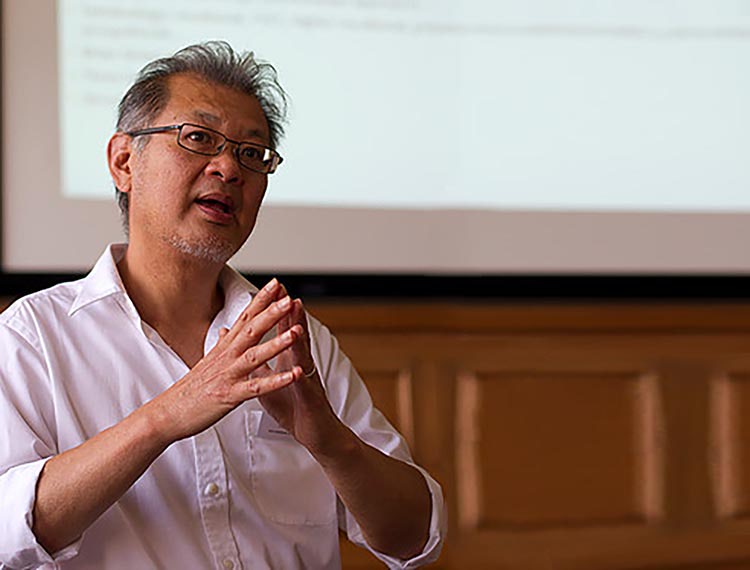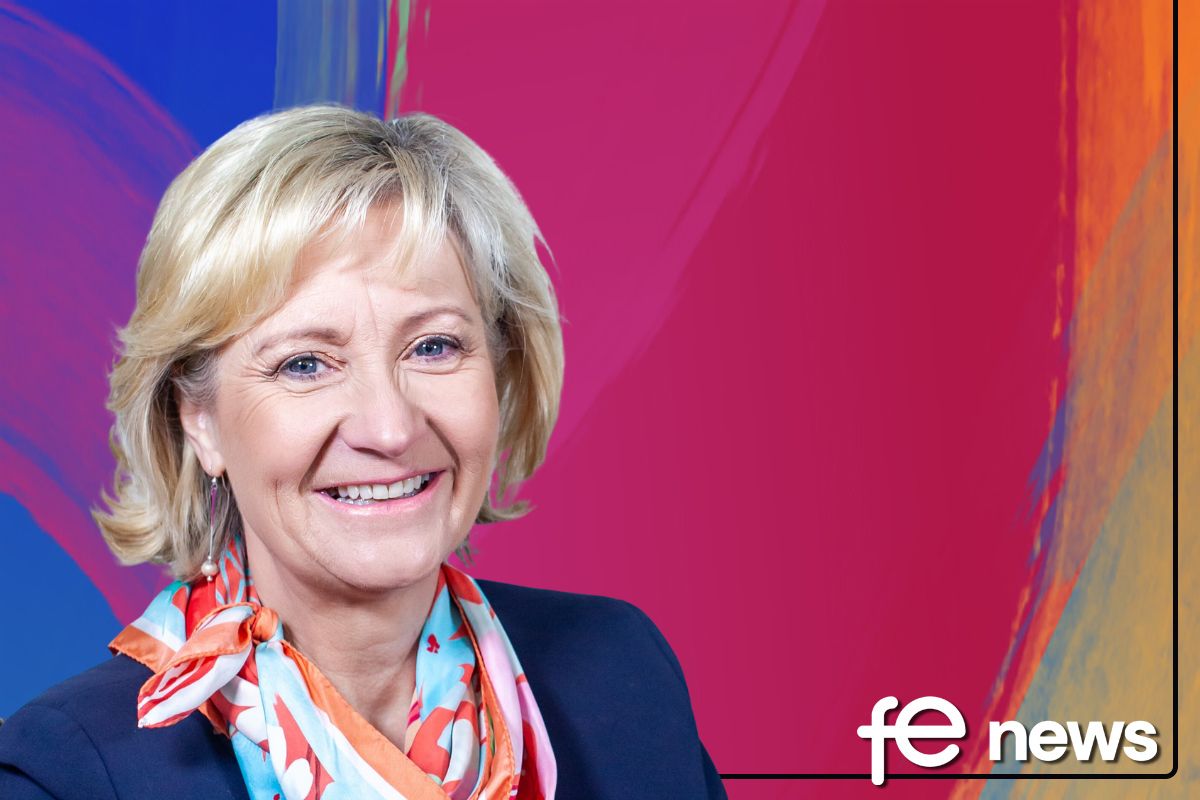Fully online learning deliveries: ‘More of the same’ or a new pedagogy?

The current global plague – COVID-19 – has accelerated teaching and learning across all the education sectors. The acceleration towards forms of online deliveries requires consideration.
Perhaps, teaching and learning or pedagogy might be classified into three modes of delivery:
- face-to-face
- mixed-mode or blended
- fully/entirely online.
The three modes of delivery rely on digital technologies. The technologies such as Audacity, Collaborate, Padlet and Skype are merely tools to facilitate those involved in teaching and learning.
Perhaps, the more relevant question to ask is the transfer of courses/programmes from the traditional face-to-face mode to digital mode any different in how we teach and learn?
This article attempts to respond to this question using my experiences as a teacher and researcher. My teaching experiences include a fully online programme in research methodologies and face-to-face courses ranging from teacher education in post-compulsory and higher education sectors, Masters and Doctoral ones.
For the project, the related research question included: is the learning process from this online programme any different to face-to-face programmes?
A mixed-method of survey and interviews was employed in the project on online teaching of research methods.
Is fully online pedagogy different from a traditional one?
Perhaps, an illustration of the possible contrasting styles of teaching and learning might be helpful. The subject is the interview research method, what Bernstein (1996) calls the ‘what’ or content/specification. The ‘how’ refers to the way the content is delivered.
Face-to-face delivery
In a face-to-face, interview research method might be delivered in two parts: an explanation of the method followed by a discussion or simulated tasks to further the learners’ understanding of the topic.
A three-hour session follows the knowledge acquisition and application approach that Bernstein calls sequencing. Even for a flipped teaching, where pre-sessional sources are made available, and the ‘acquisition’ aspect could be delivered by way of a quiz, presentation, etc. regarding the salient features before venturing into the detailed aspects of the topic.
Both of the above teaching approaches involve a sequential plan. The emphasis is on the acquisition and not the application of the new knowledge. You can imagine the issues regarding conducting interviews in the application part of the session.
Online delivery
In a fully online course, this topic (‘what’) might be delivered over two weeks. The relevant learning resources might be offered in the first week for the learners to engage with the content. This independent approach to learning could be facilitated via Discussion Forums to engage the learners to post questions and answers either individually or collaboratively in teams depending on the relevant educational contexts such as cohort size, previous knowledge of the learners, number of tutors etc. The deliverers could monitor this activity. The goal of this topic might be to report back with some findings of interviews during the two-week duration culminating in a Collaborate or Microsoft Team session. The session might be organised individually or in teams to present the results on interviews.
The essential differences between the two delivery modes
The above examples illustrated the essential differences between the two teaching modes. The traditional face-to-face method might use a student-centred social constructivist learning theory where the emphasis is on the learner and using her/his know-how to build on the content and then apply the new knowledge to reinforce their understanding.
Another learning theory, such as behaviourism would take a different teaching approach where the focus is on the assessment of the content [See Theories of Learning – a comprehensive image of the major theories and their possible connections for an overview of the significant learning theories]. The sequencing of knowledge acquisition and application is still the same on the fully online teaching approach.
However, online delivery could be different in two ways:
Duration
One is about the duration. Rather than a three-hour session, the online offer might be a two-week ‘session’. This time difference has implications for teaching and learning. The deliverer has to ‘teach’ in the three-hour class to help the learners to understand the content first and foremost, and then get them to apply the tentative understandings in simulated tasks to reinforce their knowledge. The learner has to try and understand as much as possible in the three-hour session, and follow this up by further work. The primary input of the teacher revolves around the lesson planning and delivery.
Whereas, for the online teacher, the ‘teaching’ involves monitoring of the Discussion Forums to make sure the learners are on the right path as regards content before facilitating a Collaborate session at the end of the two-week ‘session’. This approach to teaching implies a thorough understanding of the topic and its application to real-world scenarios. Given the two-week duration of this delivery mode, students (especially those with previous experiences of this topic) would require a more in-depth engagement than a three-hour class. Also, the Collaborate session would need the teacher to focus not just on a general understanding of interview research method, but a thorough practical knowledge of the research method to help the learners to understand the finer points such as implementation issues.
Focus
The other difference is the focus of the two delivery modes. The traditional teaching mode concentrates on the acquisition of new knowledge, whereas the online mode focuses on the learning outcome in the form of an activity. The activity, e.g. interviewing two people on the same subject (e.g. educational experiences) using different interviewing settings such as online and face-to-face in different locations, would offer a more ‘real-world’ experience than a time-constrained simulated environment of a classroom in a traditional session.
From the above illustration (Figure 1), one might notice the pacing of the two delivery modes is different: three-hours and two weeks. The sequencing might be the same as both delivery modes use the acquisition and application of new knowledge. However, the emphasis might be different—the traditional approach centres on the acquisition, whereas the online, application. The learning process in the online mode is on applying the know-how of interview and that the acquiring aspect is almost tangential to the activity. Of course, the learner needs to acquire and understand the content before applying it to the learner’s specific activity. Thus, the application is not generic but tailored to the structure of the chosen interviewees, locations, etc. The online mode focuses on the activity. One may call this Activity Based Pedagogy (ABP). In contrast, the traditional style is on the learners’ learning of the new content and scaffolding via her/his past know-how (social constructivism).
Figure 1 Programme, delivery mode and pedagogy
|
Programme |
Campus |
Hybrid |
Online |
| Delivery mode | Face-to-face |
A mixed-mode delivery which might be classified as ‘more of the same using digital technologies’ and ‘move towards fully online provision’. |
Fully online approach that is supported by digital technologies |
| Pedagogy | [Student-centred] social constructivism | A pedagogic spectrum of ‘More of the same using digital technologies’ and ‘Move towards fully online’. | Activity Based Pedagogy (ABP) |
The above illustrations showed that we should view online teaching and learning differently to face-to-face mode. The ABP pedagogy offers new ways of constructing teaching for delivery staff and learning for learners.
So far, I have looked at two delivery modes from two ends of the pedagogic spectrum. However, for teaching institutions moving to a halfway house of ‘mixed-mode or blended’ delivery mode (Figure 1) is another matter, perhaps one that is dependent on the educational contexts. It is not the appropriate space for this article to discuss this hybrid programme. But what is relevant is to flag up some implications for ABP pedagogy in the final section.
Implications and summary
At the micro-level, the learners have more time to engage with learning with an emphasis on acquisition, reflection and application of theoretical knowledge on the participants using supportive resources such as manuals, selective readings and online forums. Skype calls, Collaborate sessions and e-mails may also offer participants opportunities to ‘facilitate’ and ‘authenticate’ their learning experiences through discussions with tutors and learners. The combination of these educational interactions will provide ‘high quality’ learning experiences (Huang, 2002) for the participants. C2’s remarks may encapsulate the quality of learning: “This course has opened my perceptions to learning in my willingness to engage with a subject despite not having expertise in and provided me with a chance to know and interact with fellow students. It [the course] also allowed me to have a more participatory way of learning.”
There are possibly four areas, which suited the participants:
- First, is the time for reflection to enable a more insightful response to an activity.
- Second, is the facility to have an asynchronous approach to critique readings, concepts and tasks.
- Third, is the relatively cheap way to communicate with participants who may be located in the five continents and with different time zones.
- Fourth, is the added functionality through various media using digital technologies and enabled individuals flexibility and pacing of their learning (such as employing relevant learning strategies in individualized periods).
The participants felt that they needed to be motivated and directed in their contexts of work (Brookfield, 1995; Knowles et al., 1998). The participants’ backgrounds vary in their work settings from being in teaching institutions, private practice in architecture and security, to NGOs. Their life experiences are diverse from countries such as Afghanistan, England, Denmark, India, Japan, Kenya, Nigeria, Spain, Uganda and United Arab Emirates. Finally, their disciplinary areas included accountancy, architecture, international studies, philosophy, and sociology and not to mention their personal lives. The comment by participant M encapsulated the above points: “Online learning is for mature, disciplined and independent learners who can juggle academic, work and life experiences.”
Learners need to acclimatise to this online mode, and thus they also require a period of adjustment from the traditional mode, support and a realignment of educational perceptions and attitudes.
For teaching staff, online delivery involves different educational activities and with different emphasis. In a sense, they require a more in-depth understanding of the topic and the ability to monitor, guide and resolve real-world situations that are generated by the learners over the extended duration. Ultimately, this may involve more input time with implications for resource allocation (not to mention the setting up of the online mode and its testing procedures, etc.) and continuous professional development.
The teaching institution (and management) needs support systems (such as training and resourcing for the relevant teaching staff) in place to facilitate the smooth transition, which in this current situation, this may not be possible. The leadership of the management is crucial in offering a smooth and staged development to bring staff on board.
The policy-makers must be made aware of the issues surrounding this transition and is not merely a ‘more of the same using digital technologies’ as this article has argued that online delivery is a different form of pedagogy.
This article has argued that online teaching and learning is different from face-to-face one. A new teaching and learning approach – ABP – of online delivery has implications for teachers, learners, management and policy-makers.
Dr Sai Loo, UCL Institute of Education, University College London
Sai Loo (PhD, MA, BSc, FHEA, ACA, FETC) is an academic at UCL Institute of Education and an author of seven research monographs. He has taught in FE and worked in industry as a Chartered Accountant. His research area is occupational education across teaching, learning and work settings from pre-university to professional education.
References
Bernstein B 1996 Pedagogy, Symbolic Control and Identity: Theory, Research, Critique. London, Taylor and Francis Limited.
Brookfield S 1995 Adult learning: an overview [on-line]. Retrieved February 21, 2014, from http://www.ict.mic.ul.ie/adult_ed/overview.htm.
Huang H-M 2002 Towards constructivism for adult learners in online learning environments. British Journal of Educational Technology, 33(1), 27-37.
Knowles M S, Holton E F, Swanson R A 1998 The adult learner. Gulf, Texas.











Responses